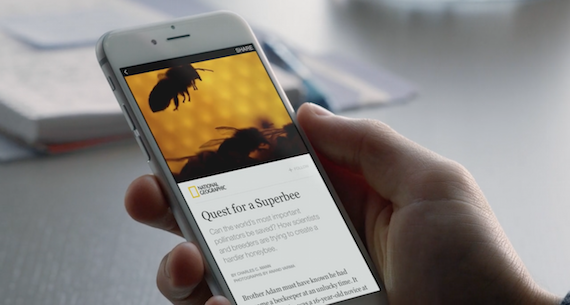Facebook introduces Instant Articles
Once again, Facebook is changing the content marketing landscape
Facebook announced today the introduction of Instant Articles. Their purpose is to cut down on the load time of articles that brands and news companies share on Facebook to improve consumer engagement. Someone may find an article interesting, but if it takes too long to load, they will abandon it and move on to other content.
“Just in hallway conversation about the media, we feel like if you don’t have somebody in 10 seconds, they’re out. It’s probably actually less than that,” said Todd James, Senior Photo Editor of National Geographic magazine.
To combat this, Facebook’s new Instant Articles, per the name, load instantly when someone taps on the headline or image.

However, load time isn’t the only benefit of Instant Articles. These new pieces of content are beautifully styled. They allow publishers to customize color, typeface and layout so consumers know what brand they are engaging with.
They also give publishers the ability to include rich photos with zoom options, auto-play videos, embedded sound bites over images, and maps so someone can see where exactly in the world a photo was taken. Taking a cue from Medium, these new Instant Articles also allow people to like or comment on individual parts of the story.
“It’s a layering of information,” said Susan Goldberg, Editor-in-Chief of National Geographic Magazine and Digital.
Facebook will begin rolling out these Instant Articles today with the following launch partners: The New York Times, National Geographic, BuzzFeed, NBC News, The Atlantic, The Guardian, BBC News, Spiegel Online and Bild.
While these stories will live on Facebook, publishers can still sell ads within the stories, or opt to use Facebook’s Audience Network to fill in unsold inventory. They will also be able to track analytics through comScore, Google Analytics and other tools.
Will it hurt publishers’ SEO? Well, these Instant Articles aren’t meant to replace content published on their websites, but rather present a better user experience for those who interact with them on Facebook, which, for most publishers, is their biggest source of traffic.
We are very excited to see how this new feature is rolled out to other brands, what they are able to do with it, and how it affects user engagement. It’s a good day for content marketers.
